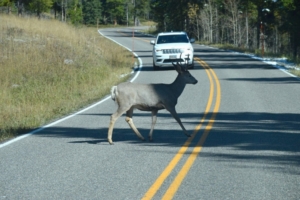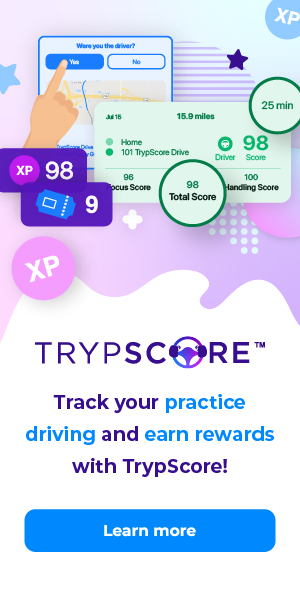Steve Wallace: Spring is prime time for wildlife on the road

Deer are the biggest wildlife hazard on most Canadian roads, Steve Wallace writes.
Some of the most unpredictable crashes involve animals. There are a few things a driver can do to minimize the conflict potential. There are also times when a crash is inevitable, as odd as that seems. Seatbelts and airbags are the best defence.
Deer are the biggest wildlife hazard on most Canadian roads. They often freeze at night, when forced to look at the oncoming headlights of a motor vehicle. This is not true when they are trying to avoid predators.
That happened to me on an Interior highway. A deer was so intent on avoiding a pursuing predator that it jumped over my car hood. The coyote chasing the deer ran right into the side of my front end. At the time, I was on my way to meet with the president of ICBC. The deer was long gone and the stunned coyote disappeared, too.
Deer whistles were an attachment on all my vehicles from that day on. Many drivers who encounter elk don’t believe what they’re seeing at first. From far away, elk can look like deer on the road, but at closer range, they can unnerve travellers with their sheer size. Luckily, they are more apt to shy away from major roads.
Drivers are often not sure whether to steer or brake to avoid these hazards. Driving with a space cushion or escape plan is the best option. Where no space is obvious, lowering your speed (especially at night) is advisable.
My strangest animal contact was with a caribou. It was standing in the middle of the highway near Mackenzie in northern B.C., licking the salt from the pavement indents.
Mine was the only vehicle on the road. I stopped, tooted the horn and flashed the lights. Nothing!
I then drove alongside the unresponsive ungulate, and still nothing. After a minute or so I moved on. Strange animal, indeed.
Moose are very big. Like elk, they stand very tall and can cause tremendous damage when coming into conflict with smaller compact passenger vehicles.
I have never seen a cougar in my travels. One of my friends was driving in the Cariboo and had two of them run across the road, about 50 metres in front of his vehicle. It was a unique thing to experience. Cougars seldom have vehicular conflicts.
Large animals are easier to identify. Bears can move very fast. Springtime is a particularly hazardous time for them They seem to be more interested in food supply, after a long hibernation, than vehicular hazards.
Smaller animals can be vexing for drivers. Does one brake or steer to avoid a conflict? A split-second decision is often required. The best escape is usually to the road shoulder. When there is no identifiable escape at upper speeds, drivers must have the self-discipline to take the hit rather than steer into the oncoming lane, as inviting as that may be. Avoiding a squirrel by steering into an oncoming lane is foolish at best and life-threatening at worst.
Raccoons are generally nocturnal. Always look for the eye reflections of night-active animals. Raccoons do not stray too far from their birthplace, a few blocks or so. When you see them, there is a good chance you will encounter them on a regular neighbourhood basis.
It is always sad to see a pet struck by a motor vehicle. It is happening much more seldom these days, thanks to leash laws and conscientious owners and drivers. It is acceptable to toot the horn when irresponsible pet owners walk their pets on the road, with their backs to vehicular traffic. A gentle tap on the horn is warning enough.
Steve Wallace is the owner of Joan Wallace Driving School on Vancouver Island. He is a former vice-president of the Driving Schools Association of the Americas, a registered B.C. teacher and a University of Manitoba
graduate.


